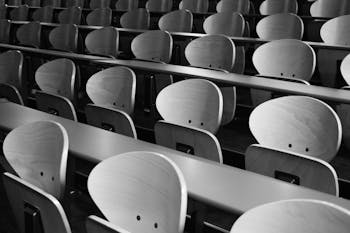
Essential Tips for Teachers to Maintain a Clean and Healthy Classroom Environment
A clean and healthy classroom is vital for creating a productive learning environment. Not only does it prevent the spread of illness among students, but it also fosters better focus, engagement, and overall well-being. Teachers, as role models, play a crucial role in maintaining cleanliness and promoting good hygiene practices. This guide offers practical tips for teachers to help keep their classrooms spotless and ensure a healthy space for students to thrive.
Establish Clear Hygiene Rules
 One of the most effective ways to maintain a clean classroom is to set clear hygiene rules from the start. By establishing expectations for cleanliness, you create a sense of accountability among your students. Start by teaching them the importance of regular handwashing, using tissues properly, and avoiding touching their faces. You can post visual reminders around the classroom, such as posters on how to wash hands properly or sneeze into an elbow. Make sure students understand the significance of these rules and how they contribute to a healthier environment for everyone. Encourage students to take responsibility for their space, such as cleaning up after themselves or wiping down desks at the end of the day. By turning cleanliness into a shared classroom goal, you promote a team effort that will benefit everyone.
One of the most effective ways to maintain a clean classroom is to set clear hygiene rules from the start. By establishing expectations for cleanliness, you create a sense of accountability among your students. Start by teaching them the importance of regular handwashing, using tissues properly, and avoiding touching their faces. You can post visual reminders around the classroom, such as posters on how to wash hands properly or sneeze into an elbow. Make sure students understand the significance of these rules and how they contribute to a healthier environment for everyone. Encourage students to take responsibility for their space, such as cleaning up after themselves or wiping down desks at the end of the day. By turning cleanliness into a shared classroom goal, you promote a team effort that will benefit everyone.
Use Safe and Effective Cleaning Supplies
To maintain a healthy classroom environment, it's essential to use cleaning supplies that are both safe and effective. Many commercial cleaning products contain harsh chemicals that may cause allergic reactions or other health issues for sensitive individuals. Opt for non-toxic, eco-friendly products that are safe for use around children, yet effective at killing germs. Make sure to clean surfaces with disinfectants, especially in high-traffic areas like desks, door handles, and shared equipment. Always store cleaning supplies out of reach of students to ensure safety. Educating students about the importance of using safe cleaning practices will help them develop habits they can carry beyond the classroom.
Create a Daily Cleaning Routine
 Routine cleaning is essential for keeping a classroom clean and organized. Having a structured cleaning schedule ensures that no area is neglected. A daily cleaning routine could include tidying up at the beginning and end of the day, wiping down desks and chairs, emptying trash bins, and organizing classroom supplies. Designating specific students to help with certain tasks can foster responsibility and ownership of the learning space. In addition to daily cleaning, consider scheduling deeper cleaning sessions with experts in carpet cleaning from Gold Coast each week. This can involve vacuuming, mopping floors, disinfecting frequently touched surfaces such as doorknobs and light switches, and ensuring that the classroom remains clutter-free.
Routine cleaning is essential for keeping a classroom clean and organized. Having a structured cleaning schedule ensures that no area is neglected. A daily cleaning routine could include tidying up at the beginning and end of the day, wiping down desks and chairs, emptying trash bins, and organizing classroom supplies. Designating specific students to help with certain tasks can foster responsibility and ownership of the learning space. In addition to daily cleaning, consider scheduling deeper cleaning sessions with experts in carpet cleaning from Gold Coast each week. This can involve vacuuming, mopping floors, disinfecting frequently touched surfaces such as doorknobs and light switches, and ensuring that the classroom remains clutter-free.
Encourage Proper Ventilation
A well-ventilated classroom plays a significant role in maintaining a healthy environment. Proper airflow reduces the concentration of airborne contaminants, including dust, allergens, and germs. It’s important to regularly open windows to allow fresh air to circulate, especially during breaks or when students are not present. If windows cannot be opened, use fans or air purifiers to maintain good air quality. Poor ventilation can contribute to the spread of respiratory illnesses, especially during cold and flu season. By ensuring your classroom has sufficient airflow, you minimize the risks associated with airborne pathogens, keeping students healthier throughout the year.
Promote Personal Responsibility Among Students
 Teaching students the importance of personal responsibility when it comes to cleanliness is key to maintaining a healthy classroom. Instill in them the habit of cleaning their desks, picking up after themselves, and disposing of trash properly. You can make this process engaging by incorporating cleanliness into the daily routine, perhaps with fun activities like “clean-up challenges” or awarding points to students who maintain a tidy space. Additionally, encourage students to practice good hygiene habits, such as using hand sanitizer after touching shared materials, covering their mouths when coughing or sneezing, and keeping their items organized. By fostering personal responsibility, students are more likely to take pride in their surroundings, creating a collective effort toward classroom cleanliness.
Teaching students the importance of personal responsibility when it comes to cleanliness is key to maintaining a healthy classroom. Instill in them the habit of cleaning their desks, picking up after themselves, and disposing of trash properly. You can make this process engaging by incorporating cleanliness into the daily routine, perhaps with fun activities like “clean-up challenges” or awarding points to students who maintain a tidy space. Additionally, encourage students to practice good hygiene habits, such as using hand sanitizer after touching shared materials, covering their mouths when coughing or sneezing, and keeping their items organized. By fostering personal responsibility, students are more likely to take pride in their surroundings, creating a collective effort toward classroom cleanliness.
Maintaining a clean and healthy classroom is an ongoing responsibility that requires cooperation from both teachers and students. A clean classroom not only protects students from illness but also fosters a positive atmosphere where they can focus and succeed. Through consistent efforts, your classroom will be a safe and welcoming space for all students to thrive.
Related Courses and Certification
Also Online IT Certification Courses & Online Technical Certificate Programs

